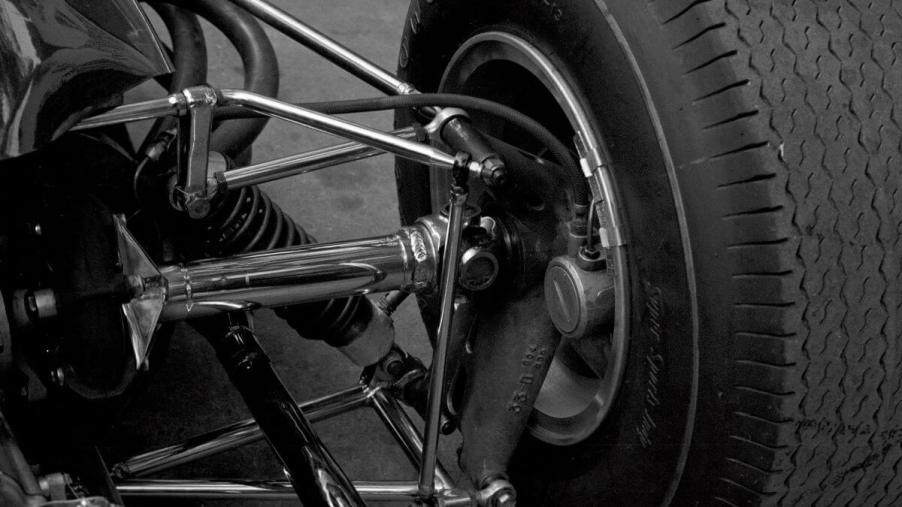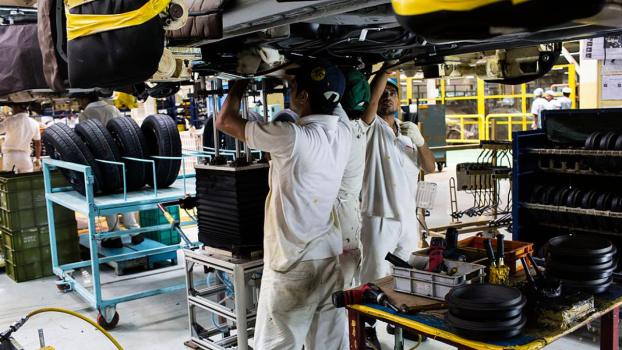
You Risk Damage to 1 Important Auto Part if You Drive on a Busted CV Axle
Ensuring the proper operation of a car’s CV axle is an essential component of automobile maintenance that many overlook. That’s too bad, because this forgotten auto part is easy to inspect for wear and tear, and its timely replacement prevents damage to other, more expensive components. So, what happens if you continue driving on a busted CV axle?
What is a CV axle, and how do you inspect it?
You probably already know what an axle is from riding a bicycle, even if you don’t know it by name. Merriam-Webster defines an axle as “a pin or shaft on or with which a wheel or pair of wheels revolves,” so on a bicycle, it’s the part that the wheel spins around. In this instance, CV stands for constant velocity, a jointed connection that allows side-to-side movement and transfers power from the car’s transmission to its drive wheels.
The bearings inside of a CV axle joint remain protected by rubber boots near either end. Inspecting these rubber boots for signs of damage is an easy way to ensure the longevity of your car’s CV axle. When performing maintenance tasks, such as routine oil changes, take a peek at the boots and look for the following conditions:
- Cracks in the rubber from age or wear
- Damaged rubber boots from impacting roadway debris
- A loose connection between the rubber boot and the axle
- Grease splatter on other components near the rubber boots
Can driving on a busted CV axle damage my car’s transmission?
Yes, it can, and other experts agree. The Drive says a failed CV axle transmits excessive movement and vibration to the car’s transmission. These forces cause extra wear and tear on the transmission shaft where the CV axle connects, the transmission housing, and the internal transmission bearings. Newparts suggests limiting driving a car with a failing CV axle to the nearest repair shop as soon as symptoms begin.
Other symptoms and damage related to a failing CV axle
Besides damaged rubber CV joint boots, RepairPal lists other busted CV axle symptoms, including variations of the following:
- Clicking or popping noises coming from the area around the drive wheels while turning, especially under acceleration
- A clunking noise when lifting your foot from the accelerator before applying the brakes
- Vibration felt in the car’s interior at highway speeds
While transmission damage is one outcome of continuing to drive a car with a bad CV axle, there are other consequences to consider. Damage to the car’s drive hub, located opposite the transmission, results in the same way as the potential transmission damage.
Worst still is the chance that the CV joint could separate. Then the broken pieces could spin around and damage your car’s suspension, braking, and steering components. Ultimately, the damage often results in a complete loss of steering control.
What should you do if you notice a damaged joint boot or other failed CV axle symptoms?
If you notice a damaged or dislodged CV joint cover early enough, there is a potential for repairing or replacing the rubber boot. However, if the other symptoms are your first alert to a problem, replacing the entire CV axle is likely your only option.
Fixd says repair costs vary depending on the make and model of your car, your geographic location, and whether or not you can do the work yourself. For example, replacing a CV axle could cost as little as a few hundred dollars or over a thousand. However, it’s still cheaper than replacing your car’s transmission.




